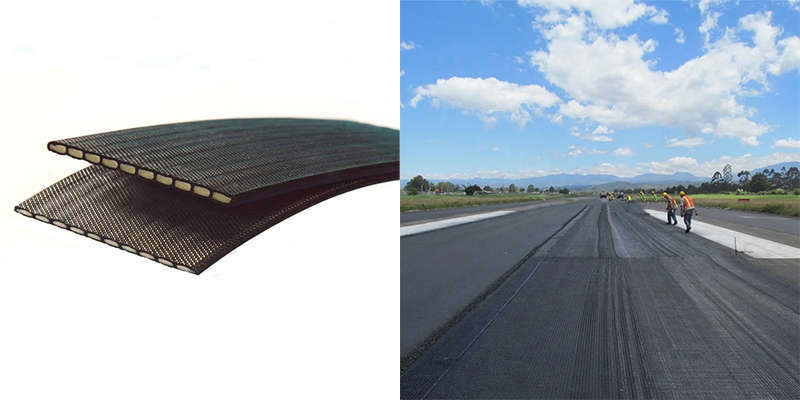Polyester fiber plastic geogrids are a specific type of geosynthetic material used in civil engineering and construction applications. These geogrids are made from a combination of polyester fibers and plastic materials. Polyester is a synthetic polymer known for its high tensile strength, durability, and resistance to environmental factors, which makes it an ideal choice for reinforcing geogrids. Here are some key characteristics and applications of polyester fiber plastic geogrids:

Characteristics:
- Polyester Fiber Reinforcement: Polyester fibers are used in the geogrid to provide high tensile strength and load-bearing capacity. These fibers are embedded in a polymer matrix, often made of polyethylene or polypropylene.
- Open Grid Structure: Like other geogrids, polyester fiber plastic geogrids feature an open grid structure with regularly spaced apertures. The specific size and shape of these apertures can vary depending on the manufacturer and intended application.
- Flexibility: These geogrids are typically flexible and can conform to the shape of the underlying soil or construction materials, making them suitable for various applications.
Applications:
- Soil Reinforcement: Polyester fiber plastic geogrids are commonly used to reinforce and stabilize soil in applications such as retaining walls, embankments, slopes, and roadbeds. They improve the load-bearing capacity of the soil and reduce the risk of settlement.
- Pavement Reinforcement: In road construction, these geogrids can enhance the performance of flexible pavements by increasing their tensile strength and reducing deformation and cracking.
- Erosion Control: Polyester fiber plastic geogrids are used in erosion control systems, such as in coastal protection projects and riverbank stabilization, to prevent soil erosion and provide stability.
- Landfill Liners: They are employed in the construction of landfill liners and caps to reinforce and separate different layers of materials.
- Subgrade Stabilization: These geogrids improve the performance of subgrade soils in various construction projects, reducing settlement and deformation.
- Load Distribution: In applications such as parking lots, industrial yards, and airport runways, polyester fiber plastic geogrids help distribute heavy loads more effectively, reducing the potential for rutting and soil displacement.
The use of polyester fiber plastic geogrids offers several advantages, including their high tensile strength, durability, and resistance to environmental factors. These properties make them effective in a wide range of construction and civil engineering applications where soil stabilization, reinforcement, and load distribution are critical.
